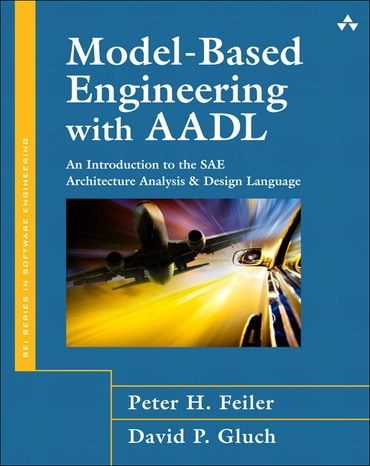
Model-Based Engineering with AADL: An Introduction to the SAE Architecture Analysis & Design Language, 1st edition
Published by Addison-Wesley Professional (September 25, 2012) © 2013
- Peter H. Feiler
- David P. Gluch
Price Reduced From: $54.99
Details
- A print text
- Free shipping
- Also available for purchase as an ebook from all major ebook resellers, including InformIT.com
This product is expected to ship within 3-6 business days for US and 5-10 business days for Canadian customers.
Title overview
Conventional build-then-test practices are making today’s embedded, software-reliant systems unaffordable to build. In response, more than thirty leading industrial organizations have joined SAE (formerly, the Society of Automotive Engineers) to define the SAE Architecture Analysis & Design Language (AADL) AS-5506 Standard, a rigorous and extensible foundation for model-based engineering analysis practices that encompass software system design, integration, and assurance. Using AADL, you can conduct lightweight and rigorous analyses of critical real-time factors such as performance, dependability, security, and data integrity. You can integrate additional established and custom analysis/specification techniques into your engineering environment, developing a fully unified architecture model that makes it easier to build reliable systems that meet customer expectations.
Model-Based Engineering with AADL is the first guide to using this new international standard to optimize your development processes. Coauthored by Peter H. Feiler, the standard’s author and technical lead, this introductory reference and tutorial is ideal for self-directed learning or classroom instruction, and is an excellent reference for practitioners, including architects, developers, integrators, validators, certifiers, first-level technical leaders, and project managers. Packed with real-world examples, it introduces all aspects of the AADL notation as part of an architecture-centric, model-based engineering approach to discovering embedded software systems problems earlier, when they cost less to solve. Throughout, the authors compare AADL to other modeling notations and approaches, while presenting the language via a complete case study: the development and analysis of a realistic example system through repeated refinement and analysis.
Part One introduces both the AADL language and core Model-Based Engineering (MBE) practices, explaining basic software systems modeling and analysis in the context of an example system, and offering practical guidelines for effectively applying AADL.
Part Two describes the characteristics of each AADL element, including their representations, applicability, and constraints.
The Appendix includes comprehensive listings of AADL language elements, properties incorporated in the AADL standard, and a description of the book’s example system.
